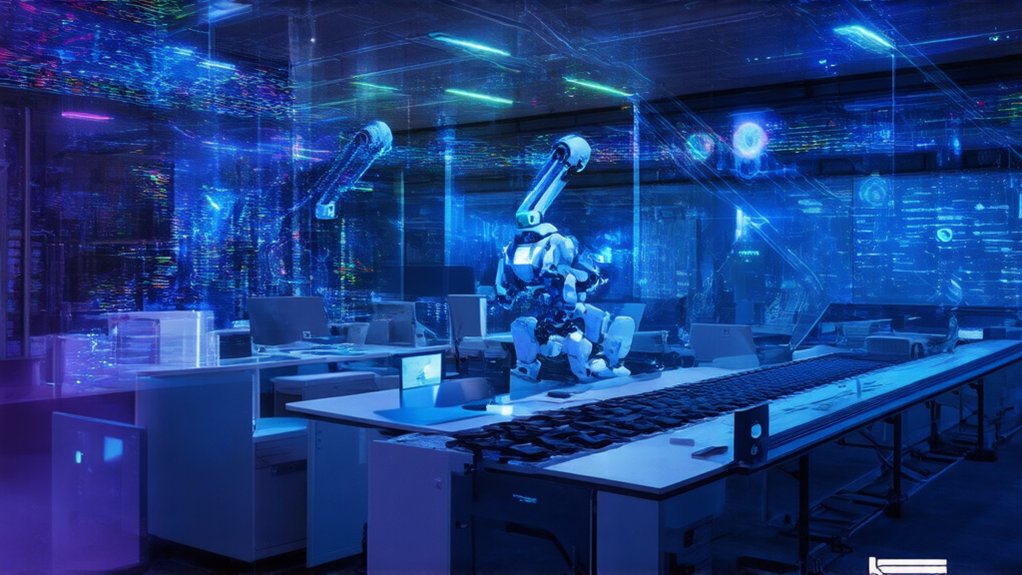As AI sweeps through offices like a digital whirlwind, it’s reshaping how we work—whether we like it or not. AI’s grip on productivity is tightening, flipping workflows upside down. Stats show a 40% boost in efficiency for companies using AI tools, per 2024 reports from McKinsey. Furthermore, 90% of workers claim AI helps save time on tasks.
Yet, here’s the kicker: not everyone’s thrilled. Employees juggle more tasks, automation handling the grunt work, but burnout creeps in. Oh, great, another app telling us what to do. Meanwhile, over three-quarters of organizations are integrating AI into their workflows to drive significant business impact. Companies leverage TensorFlow frameworks to develop custom AI solutions for their specific needs.
Yet, not everyone’s thrilled—employees juggle more tasks with automation, but burnout creeps in. Oh, great, another app dictating the day.
Diving deeper, AI’s benefits shine bright, almost too good to be true. Businesses cut costs by 30%, according to Gartner data from last year. It spots errors faster than a hawk, streamlining operations in finance and logistics.
But wait, sarcasm alert—because who needs human intuition when algorithms call the shots? On the flip side, challenges pile up like unread emails. Job losses hit 14% in routine sectors, World Economic Forum warns. Skills gaps widen; workers scramble for training that feels like a never-ending seminar.
AI’s impact on jobs? Brutal honesty here—it’s a mixed bag. Some roles vanish, others evolve into hybrid monsters needing tech savvy. By 2025, 85 million jobs could shift, per LinkedIn insights. Employees feel the pinch, surveys revealing 60% anxiety about obsolescence.
Future trends? AI integration ramps up, with predictive analytics dominating by 2030. Applications like chatbots handle customer service, freeing humans for creative stuff. Or so they say.
Emotional undercurrent: excitement mixed with dread, as workplaces turn into sci-fi sets. Direct truth: AI’s a tool, not a savior, forcing adaptation in a rush. Choppy fact: resistance grows.
End of story, for now.




